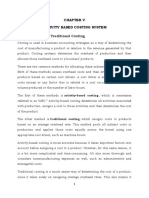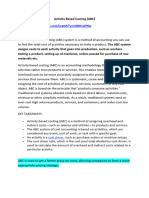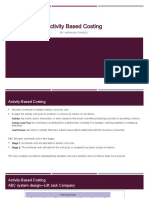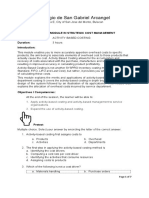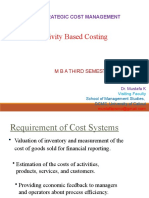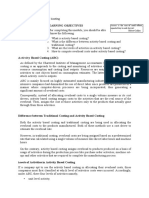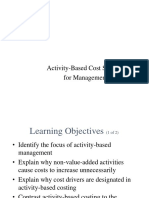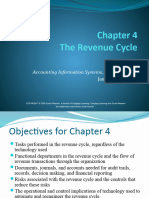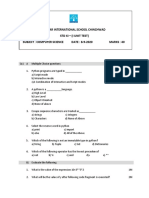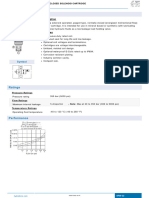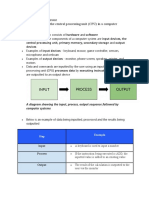0% found this document useful (0 votes)
77 views3 pagesModule 2 - Activity Based Costing
This document discusses activity-based costing (ABC) and compares it to traditional costing methods. It provides an example of how to calculate unit costs using both traditional costing and ABC for a company with two products. The key benefits of ABC include more accurate product costing, better pricing decisions, and enhanced overhead cost control. The main disadvantage is that ABC can be more expensive to implement due to the additional effort required to identify activities and cost drivers.
Uploaded by
Francis Ryan PorquezCopyright
© © All Rights Reserved
We take content rights seriously. If you suspect this is your content, claim it here.
Available Formats
Download as DOCX, PDF, TXT or read online on Scribd
0% found this document useful (0 votes)
77 views3 pagesModule 2 - Activity Based Costing
This document discusses activity-based costing (ABC) and compares it to traditional costing methods. It provides an example of how to calculate unit costs using both traditional costing and ABC for a company with two products. The key benefits of ABC include more accurate product costing, better pricing decisions, and enhanced overhead cost control. The main disadvantage is that ABC can be more expensive to implement due to the additional effort required to identify activities and cost drivers.
Uploaded by
Francis Ryan PorquezCopyright
© © All Rights Reserved
We take content rights seriously. If you suspect this is your content, claim it here.
Available Formats
Download as DOCX, PDF, TXT or read online on Scribd
/ 3









